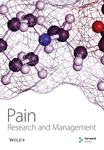Adult Attachment and Approaches to Activity Engagement in Chronic Pain
Abstract
BACKGROUND: The way in which individuals with chronic pain habitually approach activity engagement has been shown to impact daily functioning, with both avoidance of one’s daily activities and overactivity (activity engagement that significantly exacerbates pain) associated with more pain, higher levels of physical disability and poorer psychological functioning.
OBJECTIVE: To provide insight into the development of maladaptive habitual approaches to activity engagement in chronic pain by applying an attachment theory framework.
METHODS: A sample of 164 adults with chronic pain completed selfreport measures of attachment, approach to activity and pain cognitions. Mediation analyses were undertaken to examine the direct association between attachment variables and maladaptive approaches to activity, and to test for the mediating role of pain cognitions (catastrophizing and thought suppression).
RESULTS: Results demonstrated that higher levels of secure attachment were associated with lower levels of activity avoidance, which was fully mediated by lower levels of pain catastrophizing; higher levels of preoccupied or fearful attachment were directly associated with higher levels overactivity; higher levels of preoccupied attachment were associated with higher levels of activity avoidance, which was partially mediated by higher levels of pain catastrophizing; and higher levels of fearful attachment were indirectly associated with higher levels of activity avoidance through higher levels of catastrophizing.
CONCLUSIONS: These results provide preliminary support for the suggestion that insecure attachment may be a source of vulnerability to the development of disabling activity patterns in chronic pain.




